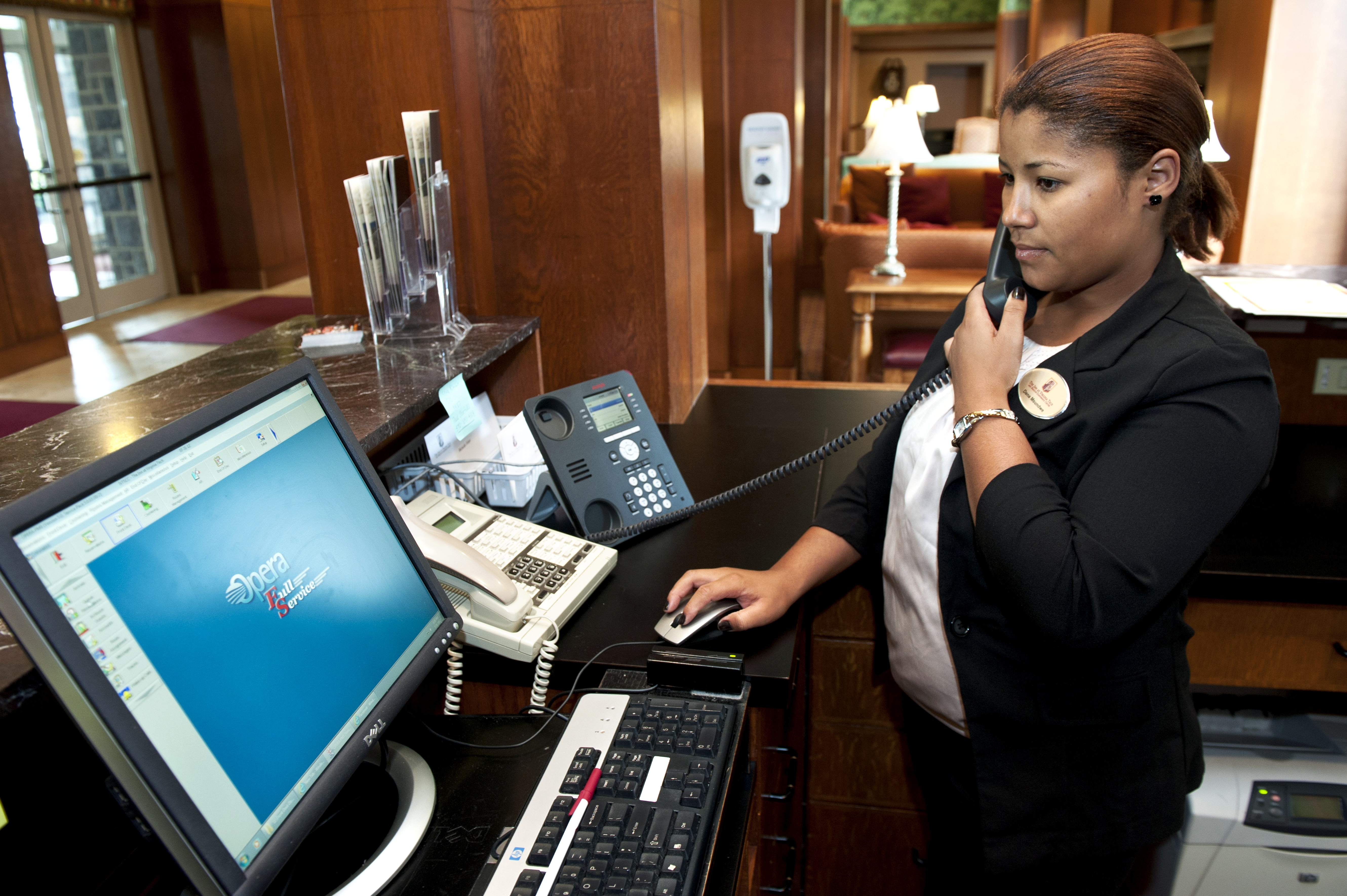Progress on unified communications continues as several campus buildings are completed

As Virginia Tech concludes its first year of work towards implementing unified communications, approximately 300 employees have new telephones backed by technology that merges traditional functions with leading-edge network-based communications.
In July, The Inn at Virginia Tech and Skelton Conference Center became the first facility to implement the system. The Inn presented several implementation challenges, including installations in hotel conference rooms and public spaces, as well as administrative offices. In addition, unified communications software needed to operate in concert with software specific to the hospitality industry.
Unified communications brings together technologies that once were separate – traditional telephony and network-based online information access and communication. Joe Hutson, director for voice and mobile technologies in Network Infrastructure and Services and project leader, points to the coming ability to access voicemail through computing and mobile devices as an example of the ways that the integration of telephony and computing will allow for greater productivity and flexibility.
The most visible aspect of the project is the installation of new telephones. In addition to The Inn at Virginia Tech, the switch over is complete at 1770 Forecast Drive, allowing Information Technology employees to participate in extensive testing of all functions of the new system. This installation also supports the Unified Communications Discovery Center, allowing “live” demonstration of the features, and providing a space for hands-on training of individuals or whole departments. Online training materials are also available.
You can try out the new phones and accessories by visiting the discovery center at 1770 Forecast Drive in the Corporate Research Center. Visit the unified communications website for hours of operation.
Several more campus buildings will equipped with the new equipment before the end of 2012, including the Student Services Building and Engel Hall. A current schedule of when buildings will be completed can be found online.
Less visible, but critical behind-the-scenes work continues, upgrading infrastructure necessary for the new systems. Installation, testing, and deployment of the underlying hardware and software systems needed to support unified communications applications is approximately 80 percent complete, with more than 50 building upgrades completed during 2012.
Another important piece of the infrastructure puzzle is the need to ensure that every building has the physical spaces needed, along with appropriate electricity supply and environmental controls. Many campus buildings already have adequate spaces designated, but others require updating. Physical spaces include both rooms to house the new equipment and physical pathways for cabling, typically created by adding conduits. Major pathway construction is underway in Randolph Hall. Renovation or creation of new rooms to house equipment has been initiated in Smyth Hall and in Parking Services, and plans for nine equipment spaces are currently in the review process.
Many buildings require upgraded cabling in order to meet the new standard of 100 Mbps Ethernet service, and to prepare for 1G Ethernet service. Network Infrastructure and Services' crews completed cabling in 13 of the buildings identified as needing cabling upgrades and additions.
Smaller buildings, such as Parking Services and the Media Annex, and larger facilities, including Hancock and Burchard halls, were among those completed this year. Crews completed cabling in the Health and Safety Building in early November, and will complete cabling work in Engel Hall by year’s end. As the cabling work continues, many new wireless access points are also being installed as part of a companion project.
Finally, infrastructure external to the university has also been changed. Switching to a different company for our primary external telephone connection offers appropriate infrastructure for the new system and adds flexibility. The new vendor supports the caller ID function, along with unlimited direct-dial domestic long distance calling for most university units, including those not yet converted to Unified Communications.
These infrastructure upgrades will keep information at Virginia Tech moving at faster pace, and will allow for greater flexibility, productivity, and control for individual faculty and staff members.
For information, visit the unified communications website or email the project team.
Dedicated to its motto, Ut Prosim (That I May Serve), Virginia Tech takes a hands-on, engaging approach to education, preparing scholars to be leaders in their fields and communities. As the commonwealth’s most comprehensive university and its leading research institution, Virginia Tech offers 240 undergraduate and graduate degree programs to more than 31,000 students and manages a research portfolio of $513 million. The university fulfills its land-grant mission of transforming knowledge to practice through technological leadership and by fueling economic growth and job creation locally, regionally, and across Virginia.




